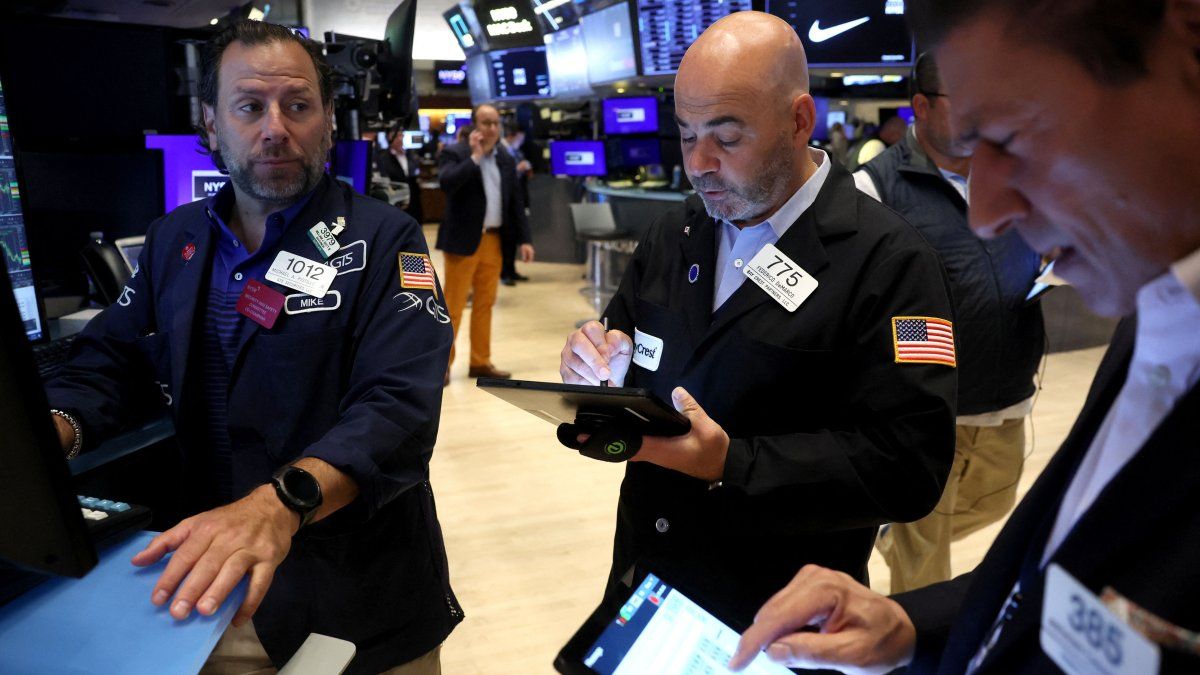The “technological” They represent a third of the capital traded in the Bag. The values of these companies had gone through the roof, supported by the projects in Artificial intelligence. Successive quarterly reports showed that its profits were not up to expectations and even marked significant setbacks; the maturation of these projects continues to take much longer than expected, although they have had a positive impact on the production chain of its suppliers.
As regards the entire business spectrum, a significant increase in bankruptcy proceedings and increasing sale of debt securities of these companies by creditor funds (FT, 11/7)At the same time, the rate of job creation, well below the rate of incorporation of new labor force, has revealed a picture of recession. The Federal Reserve, in this situation, decided, however, to keep the reference interest rate high.instead of loosening the credit conditions of the economy. Now it is expected that instead of a 0.25% reduction of this rate, it will be rushed with larger reductions and in shorter periods of time, to avoid a general crisis and facilitate the rescue of companies. It is probable that the remedy will not be adequate to the situation, because there is still strong pressure on prices to rise as a consequence of the crises caused by the wars in the production chains, so that the monetary easing will encourage a resumption of price inflation.
Whatever the importance of these factors in the collapse of the stock markets, the most explosive is the Japan’s monetary policy change and the revaluation of its currency, the yen. He Nikkei, one of the indices of the Tokyo Stock Exchange, fell by 12% on Monday morning, the 5th – the biggest drop since 1987, which reached 20% in ten daysInvestors fled the stock market to seek refuge in government bonds, which have risen substantially, “the most in a week since the pandemic,” says The Wall Street Journal. Share value fell by more than $1 trillion, or $3 trillion over the month, for large companies.
The financier Warren Buffet He publicly boasted that he had sold his shares in Apple, anticipating the stock’s collapse, but has remained tight-lipped about his investments in Japan.which were erased by the sinking of the Nikkei. A true catastrophe. (“It took just one day to erase the year’s gains in many of Asia’s major stock markets.”) The still modest rise in interest rates in Japan, below the rate of inflation, and the revaluation of the yen, which appreciated 16% against the dollar, were a must-do, which the government and the Bank of Japan have been putting off for decades.
With an economy that went from 60% to 16% of that of the United States, The Japanese authorities had established a huge economic regime of subsidies to large capitalsby purchasing public debt, private bonds and even shares. This is how Japan has the largest public debt on the planet – 330% of GDP – and is the non-equity owner of most of the island’s capital. These financial conditions stimulated capital flight, which took out loans at negative rates in their countries to reinvest in securities abroad (“carry trade”). The dismantling of this “carry trade” has exacerbated the stock market and financial crisis.
The reversal of this flow -from abroad back to Japan- is the most relevant factor in the collapse of the New York Stock Exchange. The money that has returned to Tokyo has gone into Japanese public debt. An additional element that explains Japan’s monetary ‘normalization’ is the competition to displace China as a rival financial center, whose economic growth has fallen from double digits to one and has loosened the interest rate, with the consequence of a devaluation of the yuan and a tendency for capital to flee. The bailouts that each nation has used to rescue its capital and the state from the growing international crises and wars have unleashed a gigantic international imbalance, whose ‘reset’ forces even greater crises. The recession that is believed to have started in the United States will not be helped by growing international demand from China, as occurred during the great crisis in Southeast Asia (1992/99) or the global crisis of 2007/8.whose growth rate has fallen by 60%, and which exports its crisis to the world market. The collapse of the stock markets has of course spread to Europe, where at least Germany is already in recession. Germany has not been able to reverse the crisis caused by the breakdown of energy relations with Russia.
The “adjustment” of international companies’ balance sheetsin the face of the bursting of the technology bubble and the subsidized system in Japan, It will now branch out to all capitalist strata and the public sectorwhich will have to answer for the loans they took out to finance these bubbles. The international financial debt that has fueled these bubbles is simply impressive, in the order of hundreds of billions of dollars. A measure of the level of this adjustment can be seen in the price of gold from now on, which in recent weeks had suffered a certain decline. A reduction in interest rates and a significant devaluation of the dollar, which had as a counterpart the increase in gold, would reflect a tightening of international financial conditions, a reflux of liquidity and, in that case, a more severe recession (called a “hard landing”). Hedge funds, which borrowed in yen to invest in dollars, should suffer major bankruptcies. Other more liquid funds (ETF), which according to the FT control more than half of the short-term public and private debt, would benefit from the rise in public securities, although with one huge caveat – that fiscal deficits are out of control.
Financial triggers have always served to bring the underlying crisis of the entire economy to the surface. The main one is the enormous global public debt, which, due to its unpayable nature, requires constant manipulation of financial variables. There is no social adjustment that enables a substantial economic reduction of the debt. The reduction in international interest rates should, in principle, trigger a wave of purchases of emerging countries’ debt and eventually reduce the so-called country risk, that is, the cost of refinancing the debt. A devaluation of the dollar could lead to an increase in the export prices of raw materials. Oil and gas prices are actually down, not up. Taken as a whole, the unfolding crisis could bring about a “great recession” or deflationary trend, affecting nations with a strong financial dependence. The US public debt – the largest after Japan – has been concentrated in the short term, with a higher interest rate than the long-term rate. The Treasury takes control of policy through constant auctions of securities, and therefore of the value of the currency. This jeopardizes the sustainability of the dollar at a time when US creditors withdraw their capital from the “carry trade” on the stock market or from mortgage loans, even if they take refuge, temporarily, in public debt.
It now opens the alternative to a banking crisisbecause banks replicate short-term borrowing and long-term lending – a situation known as “mismatch”. This vulnerability is accentuated in financial funds and in the Fintech, where the return of the invested money is immediate.
The development of The present crisis will have social and political implications more or less close.
Source: Ambito
David William is a talented author who has made a name for himself in the world of writing. He is a professional author who writes on a wide range of topics, from general interest to opinion news. David is currently working as a writer at 24 hours worlds where he brings his unique perspective and in-depth research to his articles, making them both informative and engaging.




